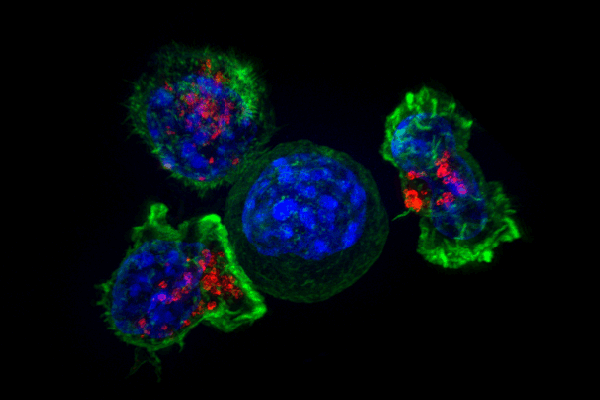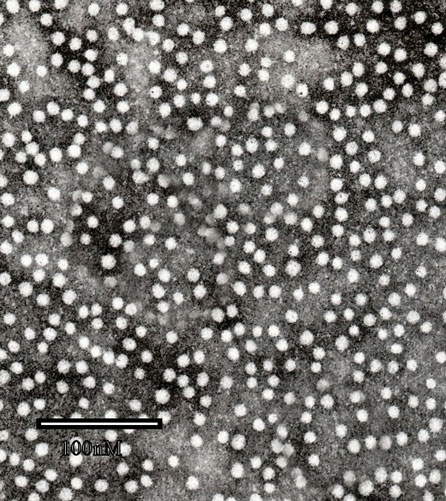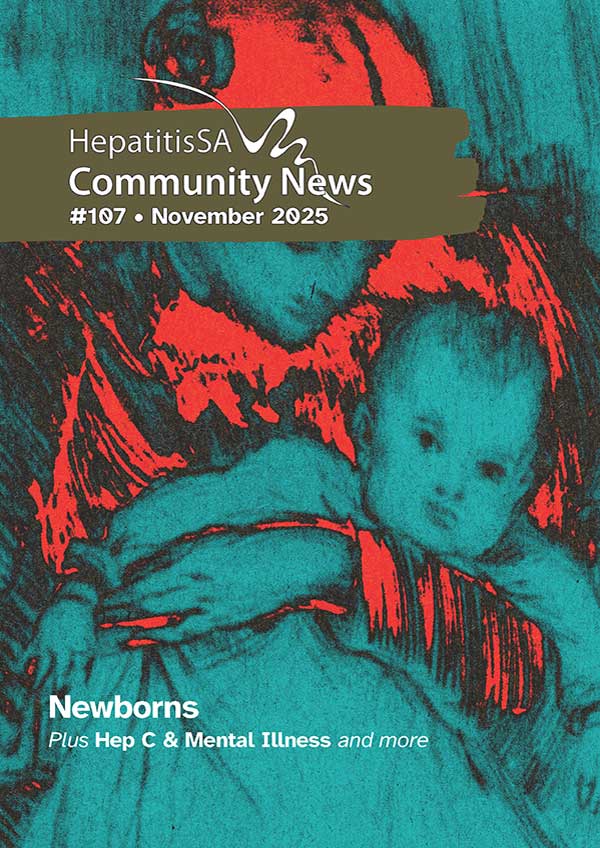Hepatitis B remains a global public health problem, even in countries like Australia with universal childhood vaccination. For people who have been infected, and who now live with chronic hepatitis B, the antiviral medications that are available rarely achieve a functional cure and require lifelong drug therapy, in stark contrast to the effective direct-acting antivirals tha can easily cure hepatitis C. One possible route to find a cure involves a kind of white blood cell known as the CD8+ T cells.
CD8+ T cells (often called cytotoxic T lymphocytes, or CTLs) are very important for immune defence against diseases that invade and attack the body’s cells, including viruses and bacteria, and for monitoring and attacking potential tumours. When a CD8+ T cell recognises its target and becomes activated, it has three major mechanisms to kill infected or malignant cells. The first is secretion of cytokines, primarily TNF-α and IFN-γ, which have anti-tumour and anti-viral microbial effects.

Unfortunately for people living with hepatitis B, CD8+ T cells become impaired during chronic HBV infection, resulting in loss of viral control. If these cells could be restored to their normal function, they ought to be able to fight back against the hepatitis B virus, especially if they are prompted to specifically recognise HBV as an antigen which they can then target and destroy.
Virion Therapeutics, a pharmaceutical and medical research company based in the US, is currently trialling a medication called VRON-0200, which they hope will provide a functional cure for chronic HBV infection. VRON-0200 is able to mitigate hepatitis B’s exhaustion of the CD8+ T cells making these cells react at an earlier and faster level to the virus, as well as bringing other T cells into the fight against HBV infection. It also attacks parts of the HBV particles not normally targeted by the T cells.
In experimental results presented at the American Association for the Study of Liver Disease’s Liver Meeting 2025, Virion claimed that a single intramuscular dose of VRON-0200 induced HBV-specific immune activation and restoration, and HBsAg (the surface antigens of the hepatitis B virus, quantities of which are measured to see how much virus is in the body) reductions that were sustained and/or continued up to a year after the single dose, in the majority of chronically HBV-infected treated patients. The data, presented by Professor Grace Wong from the Chinese University of Hong Kong, also showed rapid and profound HBsAg declines when VRON-0200 was combined with antiviral medication.

VRON-0200 was safe and well tolerated, with no serious treatment-related adverse events, treatment discontinuations, or treatment-related clinical laboratory abnormalities reported.
Study Specifics
In the majority of patients (83%; 19/23), a single intramuscular VRON-0200 dose, added to standard of care antiviral therapy, induced anti-HBV immune activation and restoration, with HBsAg declines beginning at Day 28; these HBsAg declines were sustained and/or continued to decline up to one year after VRON-0200 treatment, with 47% of patients (9/19) achieving greater than a 50% reduction at Day 360
A single VRON-0200 prime dose, followed by the addition of monthly doses of investigational antivirals initiated 28 days later, produced rapid and profound HBsAg declines in all patients; at Week 20, three of six patients achieved complete HBsAg loss, one within 7 days of the first combination dose.
The “Spark and Fan” model where an upfront VRON-0200 “spark” dose “primes” an anti-HBV immune response which is then “fanned” (aka boosted) by an antiviral regimen that removes the virus (e.g., HBsAg), suggests VRON-0200 could be a powerful tool in curing hepatitis B.
VRON-0200’s ability to restore a patient’s own anti-HBV responses, with the potential for sustained viral control after antiviral treatment ends, is a significant advance for the field.
Professor Grace Wong, The Chinese University of Hong Kong
You can access the study data in more detail here.
It’s important to note that this research is based on only a small sample size of test subjects (23 people), but if it can be replicated with larger numbers of patients then it will truly be a very promisng development in the search for a hepatitis B cure.
Last updated 28 November 2025
More from:
Enjoyed this article? Subscribe to be notified whenever we publish new stories.
Subscribe for Updates





